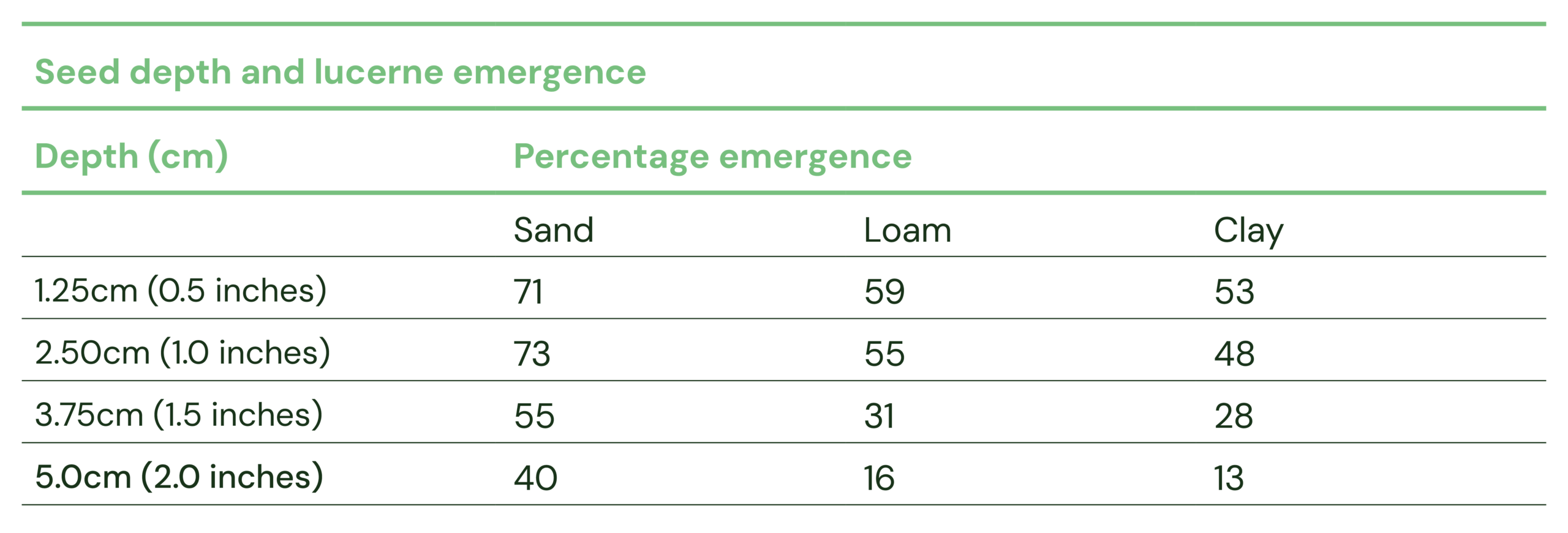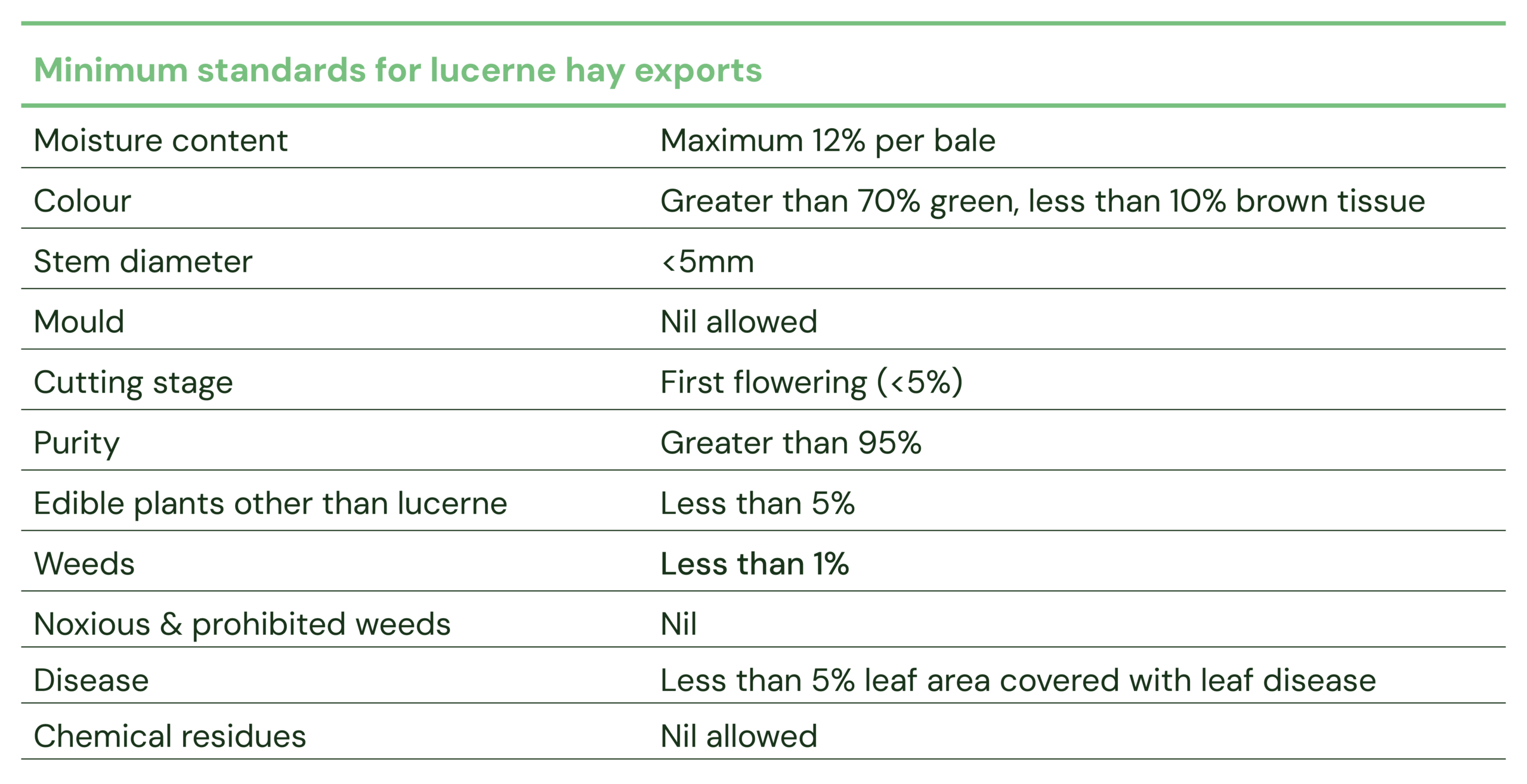With the right setup, lucerne can deliver high-quality feed, strong year-round production, and improved soil health
From soil pH and drainage to variety choice and sowing depth, getting the basics right makes all the difference to stand longevity, productivity and resilience.
Lucerne is a long-term pasture investment that pays off with:
With the right setup, lucerne works hard across grazing, hay, silage and rotation roles.
For successful establishment, aim for:
Industry best practice suggests pot testing or delaying planting if residual chemistry is a concern.
Lucerne seed is small and sensitive. A well-prepared seedbed:
Cover crops can be used, but reduce their seeding rate by 50% and sow in alternate rows.
Lucerne performs best when it’s drilled into a prepared, level, and weed-free seedbed.
Broadcast sowing can work in certain oversowing or renovation scenarios, but generally:
If broadcasting is necessary, always roll post-sowing to improve seed-soil contact.
Choosing the right variety means matching dormancy, grazing pressure, soil type and production goals.
Each variety in the AlfaGen range offers something different, from salt tolerance to flexible cutting intervals. If you’re unsure, ask our team to help match the right option to your system.
AlfaGen Seeds lucerne comes treated with Goldstrike XLR8®, which includes:
It’s a small detail that makes a big difference during establishment.
Sow at 5–15mm depth — no deeper — and aim for:
Target plant densities:

Check stands within the first 8 weeks. A patchy or weak establishment now will cost yield for years — it’s better to oversow early than struggle through thin paddocks.
Lucerne hay isn’t just about what happens at cutting — it starts with how you set up your crop. Poor drainage, uneven plant density or weed blowouts early on can directly affect your ability to hit feed quality targets later.
Whether you’re feeding on-farm or chasing premium hay markets, these quality standards give you a benchmark to work towards from day one.
Minimum standards for lucerne hay exports
This table highlights why clean establishment, strong variety choice and good early management matter — mould, weeds, stem thickness and even tissue colour all come back to decisions made before sowing.

Getting lucerne right from the start sets you up for years of quality feed and strong regrowth. With the right paddock preparation and variety selection, lucerne can be a highly rewarding crop that keeps delivering season after season.
You’ve nailed the groundwork — literally. If you’re preparing to sow lucerne, here’s what to explore next in the Lucerne Advisor Series:
Need help choosing the right variety?
Explore the AlfaGen lucerne range or talk to your local Territory Manager.